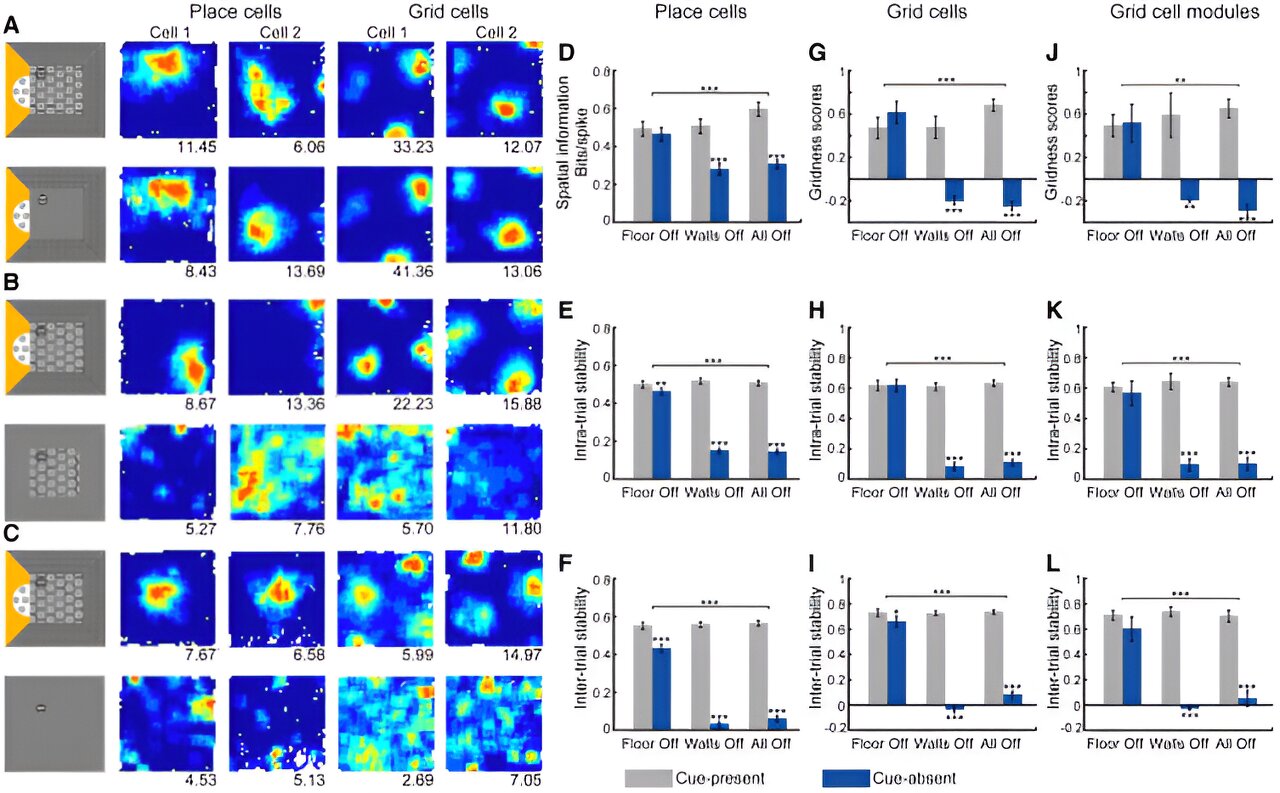
× shut
New analysis printed in Present Biology sheds mild on how animals create and preserve inner spatial maps based mostly on their environment.
The examine, led by Dr. Guifen Chen from Queen Mary College of London, delves into the brains of mice navigating a two-dimensional digital actuality (VR) surroundings, revealing the shocking significance of particular visible cues for constructing and sustaining spatial maps. It reveals that particular visible cues—on this case, elevated partitions—are essential for stabilizing the neurons answerable for spatial navigation in digital actuality (VR).
“Our findings present a big step ahead in understanding the exact nature of the sensory info that animals used for boundary detection,” says Dr. Chen. “They not solely spotlight the significance of elevated boundaries in constructing spatial maps, but additionally reveal the mind’s exceptional capacity to deduce boundaries from sensorimotor mismatch even once they’re indirectly seen.”
The analysis staff carried out a captivating experiment utilizing digital actuality methods. Mice navigated in a two-dimensional digital surroundings, whereas the neural exercise was monitored. Particularly, the examine focuses on the exercise of neurons essential for navigation: place cells, which fireplace when the animal is in a selected location, and grid cells, which type a hexagonal grid-like map of the surroundings.
This VR surroundings was a two-dimensional world that might be manipulated to incorporate or exclude varied visible components. By monitoring the exercise of those neurons, the scientists may observe how the mice’s spatial maps have been up to date in response to the manipulation inside the VR world.
Essentially the most putting discovering centered across the position of visible boundaries. When the VR surroundings included elevated partitions, the place cells and grid cells within the mice’s brains fired persistently, indicating steady spatial maps.
Nevertheless, eradicating these partitions triggered the firing patterns of those cells to grow to be erratic, demonstrating a disruption within the animals’ capacity to navigate. Apparently, eradicating cues from the ground of the VR surroundings had no vital affect. This means that the precise type of visible cues performs a vital position in how animals construct and preserve their inner maps.
Dr. Chen labored with Xiuting Yang, a Ph.D. scholar in her lab on the Faculty of Organic and Behavioural Sciences at Queen Mary College of London, in addition to Professor Francesca Cacucci, Professor Neil Burgess and Dr. Tom Wills at UCL on this paper.
The analysis staff believes these findings have broader implications for understanding real-world navigation.
“Our outcomes recommend that the elevated—not flat—boundary performs a vital position in how animals preserve spatial maps,” explains Dr. Chen. “This may occasionally clarify why, as an illustration, younger kids battle to make use of flat outlines of shapes for spatial orientation.”
This examine opens doorways for additional analysis into the intricate interaction between sensory info, spatial reminiscence, and navigation. It may pave the best way for developments in fields starting from robotics and digital actuality growth to a deeper understanding of spatial navigation problems.
Extra info:
Xiuting Yang et al, Visible boundary cues suffice to anchor place and grid cells in digital actuality, Present Biology (2024). DOI: 10.1016/j.cub.2024.04.026
Journal info:
Present Biology